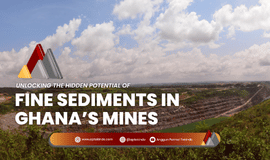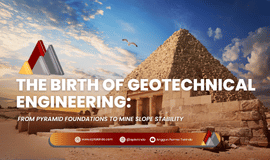In the mining industry, managing tailings (the waste materials left after extracting valuable minerals) is not something to be taken lightly. One of the safest and most environmentally responsible ways to manage tailings is by constructing effective tailing dams. Improper tailing management can negatively impact surrounding ecosystems, making it essential for mining companies to select the appropriate dam design.
Tailing dams come in various forms, each adapted to natural conditions and management objectives. Below are several common types of tailing dams used in the mining industry.
1. Side Hill
This type of dam is designed with a slope gradient greater than 10%. Side hill dams are suitable for areas with steep terrain. One key advantage of this design is its ability to utilize sloped land efficiently, resulting in more effective land use. Additionally, the steeper gradient facilitates better water management around the dam, reducing the risk of erosion or leakage. This form is ideal for mountainous regions or areas with varied elevation.
2. Ring Dyke
Unlike side hill dams, ring dykes are typically used in flat terrain. These dams can be constructed in layers, allowing for easier modification and maintenance over time. The circular design of a ring dyke helps isolate tailings within a controlled area, minimizing the risk of environmental contamination. Ring dykes are often selected for mining operations in lowland areas with minimal elevation changes.
3. Conventional Earth Dam
This is the most traditional type of dam, commonly used in many mining projects. A conventional earth dam is built using compacted earth or rock to form a barrier. While effective in many cases, this type of dam requires intensive maintenance, particularly in monitoring its stability. This is the most traditional type of dam, commonly used in many mining projects. A conventional earth dam is built using compacted earth or rock to form a barrier. While effective in many cases, this type of dam requires intensive maintenance, particularly in monitoring its stability. This is the most traditional type of dam, commonly used in many mining projects. A conventional earth dam is built using compacted earth or rock to form a barrier. While effective in many cases, this type of dam requires intensive maintenance, particularly in monitoring its stability. It is generally used in areas with stable soil conditions that are less prone to ground movement.
Conclusion
Tailing management is a critical aspect of the mining industry, and the use of a proper Tailing Storage Facility (TSF) is the key to sustainable operations. Well-designed tailing dams, such as side hills and ring dykes, play a vital role in ensuring that tailings do not harm the environment. Improper disposal—such as dumping tailings into rivers or oceans—can destroy ecosystems and pollute vital water sources for nearby communities.
Therefore, tailing management must be carried out carefully and in accordance with strict environmental standards. Mining companies need to consider the long-term environmental impact when choosing a tailing disposal method. By selecting the appropriate dam design, tailing management can be made safer and more eco-friendly, preventing larger-scale damage and supporting the sustainability of mining activities for the future.
Source: https://agincourtresources.com/id/2019/10/21/pentingnya-keamanan-tsf-di-pertambangan-emas/











